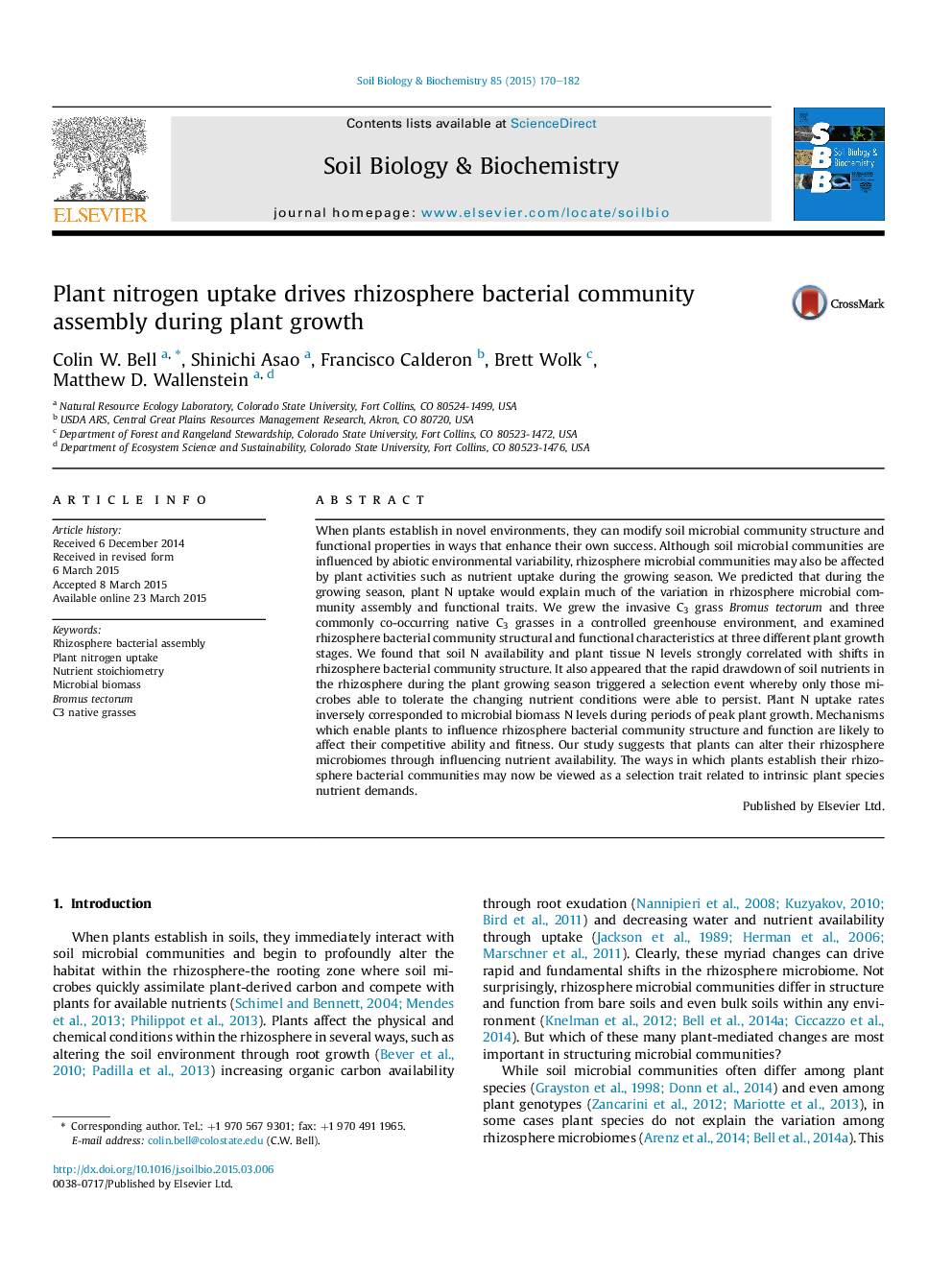| Article ID | Journal | Published Year | Pages | File Type |
|---|---|---|---|---|
| 8364218 | Soil Biology and Biochemistry | 2015 | 13 Pages |
Abstract
When plants establish in novel environments, they can modify soil microbial community structure and functional properties in ways that enhance their own success. Although soil microbial communities are influenced by abiotic environmental variability, rhizosphere microbial communities may also be affected by plant activities such as nutrient uptake during the growing season. We predicted that during the growing season, plant N uptake would explain much of the variation in rhizosphere microbial community assembly and functional traits. We grew the invasive C3 grass Bromus tectorum and three commonly co-occurring native C3 grasses in a controlled greenhouse environment, and examined rhizosphere bacterial community structural and functional characteristics at three different plant growth stages. We found that soil N availability and plant tissue N levels strongly correlated with shifts in rhizosphere bacterial community structure. It also appeared that the rapid drawdown of soil nutrients in the rhizosphere during the plant growing season triggered a selection event whereby only those microbes able to tolerate the changing nutrient conditions were able to persist. Plant N uptake rates inversely corresponded to microbial biomass N levels during periods of peak plant growth. Mechanisms which enable plants to influence rhizosphere bacterial community structure and function are likely to affect their competitive ability and fitness. Our study suggests that plants can alter their rhizosphere microbiomes through influencing nutrient availability. The ways in which plants establish their rhizosphere bacterial communities may now be viewed as a selection trait related to intrinsic plant species nutrient demands.
Related Topics
Life Sciences
Agricultural and Biological Sciences
Soil Science
Authors
Colin W. Bell, Shinichi Asao, Francisco Calderon, Brett Wolk, Matthew D. Wallenstein,
